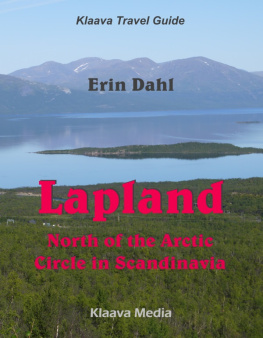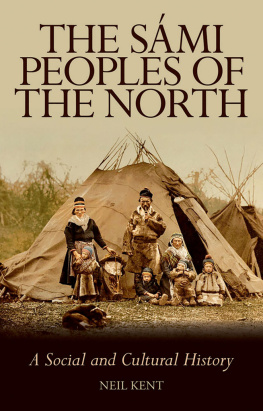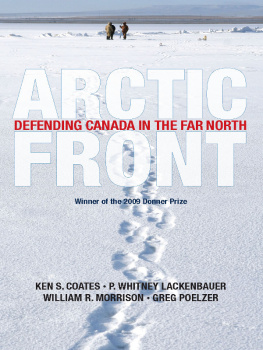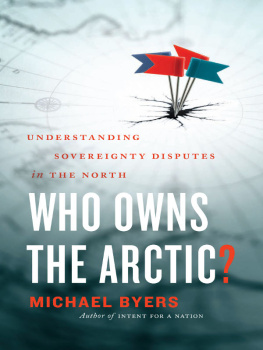
New Directions in Scandinavian Studies
Christine Ingebritsen and Andy Nestingen, Series Editors
New Directions in Scandinavian Studies
This series offers interdisciplinary approaches to the study of the Nordic region of Scandinavia and the Baltic States and their cultural connections in North America. By redefining the boundaries of Scandinavian studies to include the Baltic States and Scandinavian America, the series presents books that focus on the study of the culture, history, literature, and politics of the North.
Small States in International Relations, edited by Christine Ingebritsen, Iver B. Neumann, Sieglinde Gstohl, and Jessica Beyer
Danish Cookbooks: Domesticity and National Identity, 16161901, by Carol Gold
Crime and Fantasy in Scandinavia: Fiction, Film, and Social Change, by Andrew Nestingen
Selected Plays of Marcus Thrane, translated and introduced by Terje I. Leiren
Munchs Ibsen: A Painters Visions of a Playwright, by Joan Templeton
Knut Hamsun: The Dark Side of Literary Brilliance, by Monika agar
Nordic Exposures: Scandinavian Identities in Classical Hollywood Cinema, by Arne Lunde
Icons of Danish Modernity: Georg Brandes and Asta Nielsen, by Julie K. Allen
Danish Folktales, Legends, and Other Stories, edited and translated by Timothy R. Tangherlini
The Power of Song: Nonviolent National Culture in the Baltic Singing Revolution, by Guntis midchens
Church Resistance to Nazism in Norway, 19401945, by Arne Hassing
Christian Krohgs Naturalism, by ystein Sjstad
Fascism and Modernist Literature in Norway, by Dean Krouk
Sacred to the Touch: Nordic and Baltic Religious Wood Carving, by Thomas A. DuBois
Smi Media and Indigenous Agency in the Arctic North, by Copplie Cocq and Thomas A. DuBois
Smi Media and
Indigenous Agency
in the Arctic North
COPPLIE COCQ AND
THOMAS A. DUBOIS
UNIVERSITY OF WASHINGTON PRESS
Seattle
Smi Media and Indigenous Agency in the Arctic North was made possible in part by support from the Department of Scandinavian Studies at the University of Washington.
Copyright 2020 by the University of Washington Press Printed and bound in the United States of America
Design by Katrina Noble
Composed in Ashbury, typeface designed by Dieter Hofrichter
242322212054321
All rights reserved. No part of this publication may be reproduced or transmitted in any form or by any means, electronic or mechanical, including photocopy, recording, or any information storage or retrieval system, without permission in writing from the publisher.
UNIVERSITY OF WASHING TON PRESS
uwapress.uw.edu
LIBRARY OF CONGRESS CATALOGING-IN-PUBLICATION DATA ON FILE
ISBN 978-0-295-74662-3 (hardcover)
ISBN 978-0-295-74660-9 (paperback)
ISBN 978-0-295-74661-6 (ebook)
The paper used in this publication is acid free and meets the minimum requirements of American National Standard for Information SciencesPermanence of Paper for Printed Library Materials, ANSI Z39.481984.
Contents
Giitu
Acknowledgments
Our thanks go first to all those people who generously participated in this project through interviews, through granting us permission to quote their words or reproduce images, and by providing feedback that helped us improve our interpretations. Not only did people provide a wealth of information with generosity and alacrity, they also provided encouragement, suggestions, and clarifications that vastly improved our study. We could not have told the story we set out to tell here without the permission and help of people like Britt-Marie Barruk, Mari Boine, Rawdna Carita Eira, Anamaria Fjllgren, Jon Henrik Fjllgren, Katja Gauriloff, Katarina Hllgren, Sofia Jannok, Amanda Kernell, Timimie Mrak, Ole Paus, Jeff Schad, Niillas Somby, and many others. Some of the people we thank informed us through person-to-person consultations, others through the inspiring creative works they produced and left behind for future generations. Where appropriate, they are named in the pages that follow; where confidentiality was needed, we thank them here without names. We have endeavored to do justice to these important contributions and we apologize for any failings that arise in our text.
We wish to thank colleagues in the fields of Smi studies, Indigenous studies, Nordic studies, ethnology and folklore studies, communication studies, and digital studies for their generous and constructive input and help with various aspects of our study. These include: Per Axelsson, Isabelle Brnnlund, Susan Brantly, B. Marcus Cederstrm, Colin Connors, Elizabeth Covington, Tim Frandy, Harald Gaski, Siri Gaski, Stefan Gelfgren, Lis-Mari Hjortfors, Robert Howard, Ella Johansson, Merrill Kaplan, Lena Kappfjell, Barbro Klein, David Kroik, Dean Krouk, Kristin Kuutma, Patrik Lantto, Jim Leary, Veli-Pekka Lehtola, Evelina Liliequist, Marianne Liliequist, Scott Mellor, Todd Michelson-Ambelang, Lena Maria Nilsson, Ruth Olson, sa ssbo, Hanna Outakoski, Tobias Poggats, Jelena Porsanger, John Prusynski, Britt Rajala, Amber Rose, Moa Sandstrm, Grel Sandstrm, Kristina Sehlin MacNeil, Hanna Snellman, Peter Steggo, Krister Stoor, Jon Petter Stoor, Charlotta Svonni, Mikael Svonni, Mikael Vinka, Kirsten Wolf, Ekaterina Zmyvalova, and many others. Comments and guidance came also through the feedback we received at academic conferences, including the annual or occasional meetings of the American Folklore Society, the Association for the Advancement of Scandinavian Studies of Canada, the International Society for Folklore and Ethnology, the Native American Indigenous Studies Association, the Nordic Ethnology and Folklore Conference, and the Society for the Advancement of Scandinavian Study. And we thank the two anonymous reviewers of our text for the University of Washington Press, whose feedback and recommendations greatly improved our work. We also wish to thank the Shkie Ume Samefreningen and the Gelejarnge Samiskt sprkcentrum for their enthusiasm and inspirational work.
This book has also benefited from the institutional collegiality and support we encountered along the way. Copplie wishes to thank VaartoeCentre for Smi research at Ume University for funding at the initial phase of this work and for the insightful comments and discussions from generous colleagues there. She also thanks her colleagues at Humlab, Ume university, for making such an intellectually stimulating environment. A special thanks to Ingela Westerlund for her priceless administrative support and kindness along the process. Tom wishes to thank his colleagues and students at the Department of German, Nordic and Slavic at the University of WisconsinMadison, and to gratefully acknowledge the crucial funding assistance that came from the University of Wisconsins Birgit Baldwin Professorship, Halls-Bascom Professorship, Center for European Studies, Graduate School, and Sustaining Scandinavian Folk Arts in the Upper Midwest project. Important fieldwork was also made possible through Toms time as a fellow of the Swedish Collegium for Advanced Study in Uppsala, Sweden, and through assistance from the Kungl. Gustav Adolfs Akademien fr Svensk Folkkultur.











